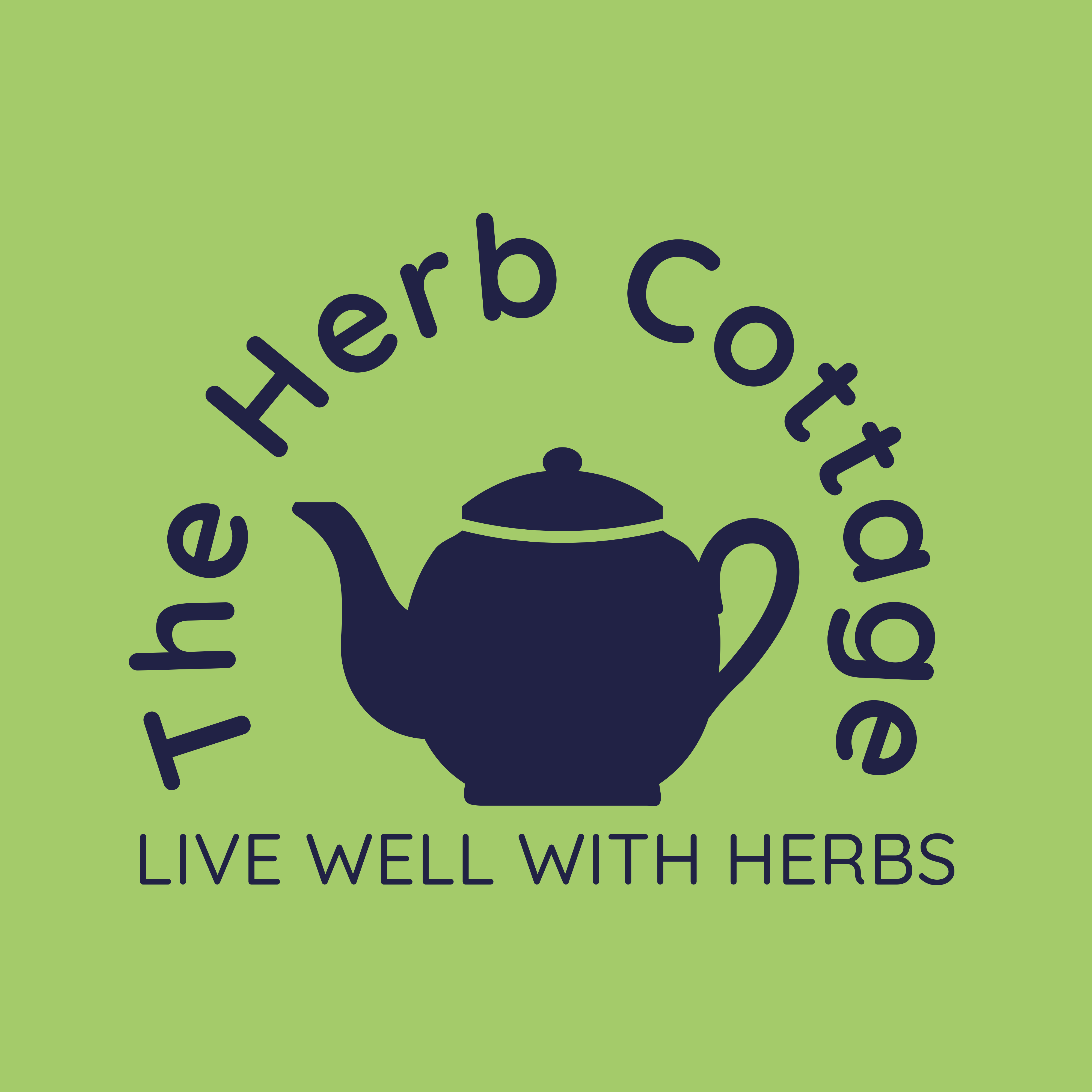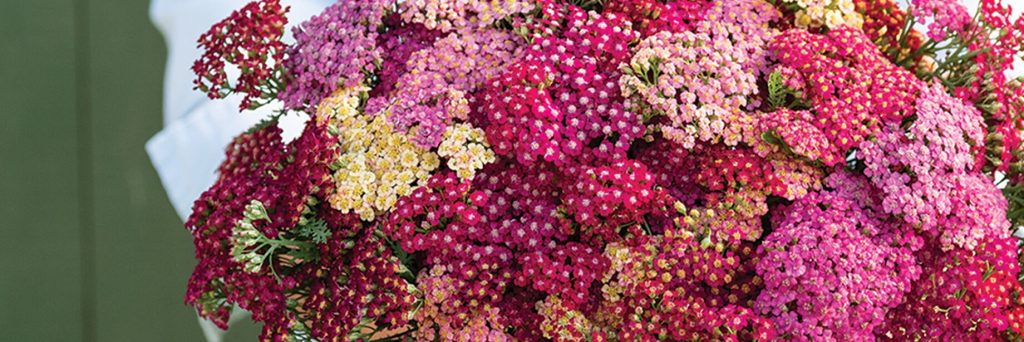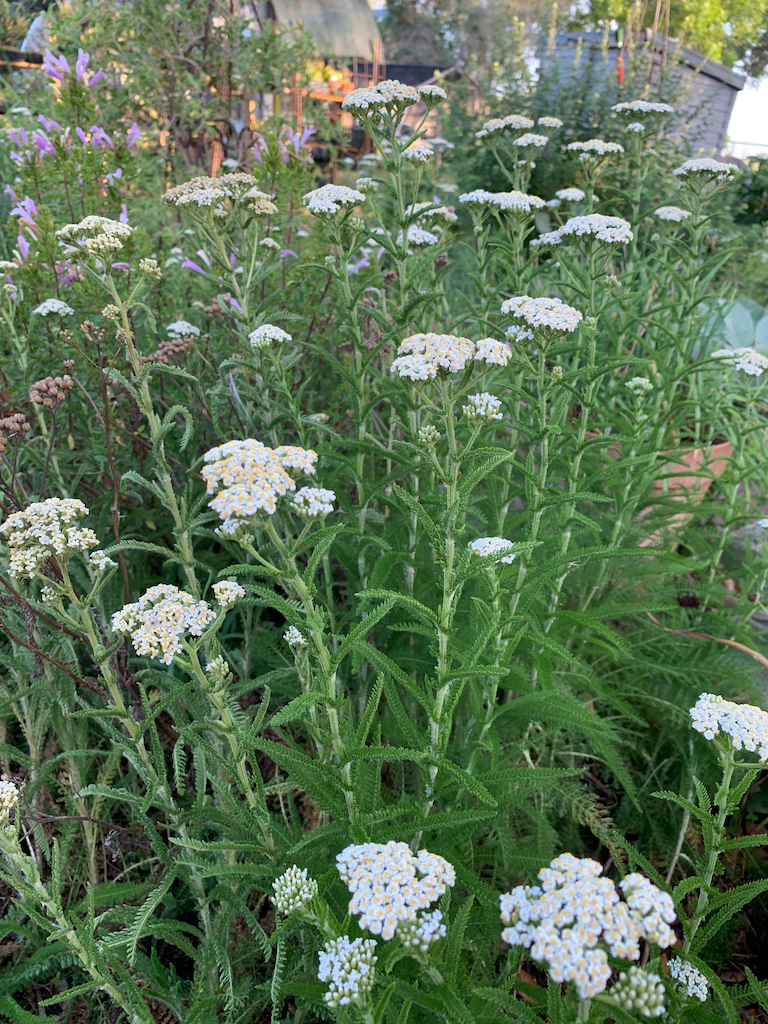
Native, White Yarrow growing at The Herb Cottage in early Summer.
Herb of the Year
Yarrow, Achillea millefolium, is The International Herb Association’s 2024 Herb of the Year. The IHA has taken it upon itself for the past many years to designate a Herb of the Year. The purpose is to bring more study and awareness to a particular herb each year.
Yarrow is an exciting herb to learn about and to use.
One property of Yarrow I especially like is that it is easy to grow and can grow almost anywhere. It is extremely cold hardy, dying down in the Winter in cold climates and coming back out in the Spring. When it reemerges in the Spring, the new leaves are a bright, almost neon, green. They are easy to spot in the garden or in a wild area.
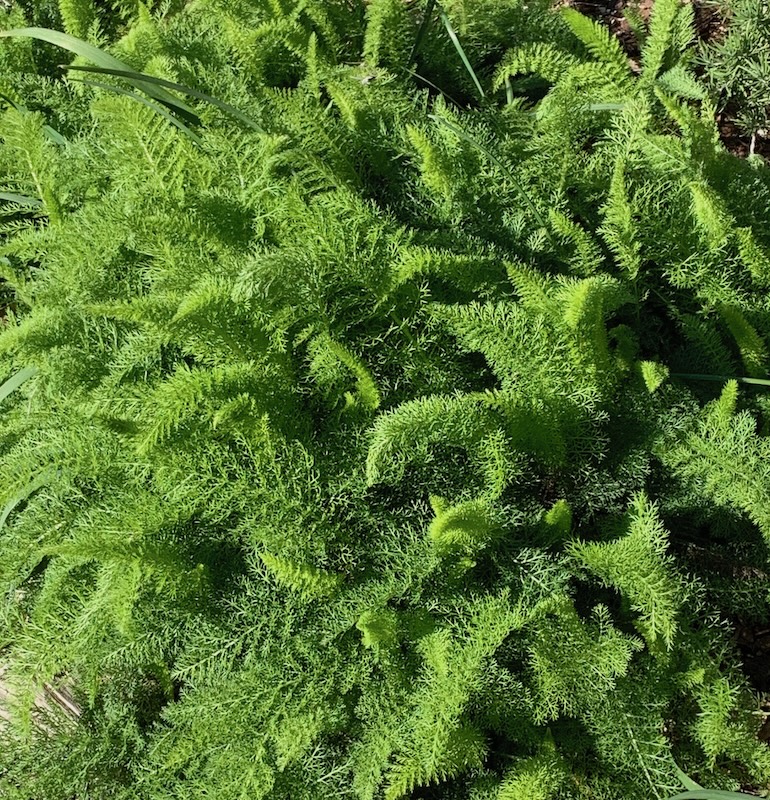
Early Spring growth of Yarrow leaves.
Yarrow likes to grow in disturbed soils and does not need a lot of water. One condition it doesn’t like is poor drainage. So, grow your Yarrow in a well drained or raised area of the garden if your soil is very dense. In hot climates where drought often occurs or rain is sparse during the hottest months, Yarrow may die down considerably in the Summer without additional watering.
Another property of Yarrow is its ability to spread by underground rhizomes. I like that property of Yarrow, but if you like your garden a little neater and more manicured looking, you can easily pull up new shoots. They are easy to transplant or to give away. Another option is to grow Yarrow in a large container and let it fill the space.
Yarrow is a wonderful pollinator attractor. I find butterflies, and many tiny insects on it during the growing season. It is high on the list of plants to put in a butterfly and/or pollinator garden.
You can find different colors of Yarrow at nurseries during the growing season. These varieties make lovely additions to a butterfly garden or any perennial garden plan. They also fairly easy to grow from seed, if you have patience and the time to let it grow. Otherwise, plants are available at many nurseries.
Herbal Properties of Yarrow
Yarrow, achillea millefolium, as it is known botanically, is a herbaceous perennial with ferny green leaves. Tall, stiff flower stalks grow in early summer. The leaves grow in clusters at the bottom of the flower stalks and also grow on the stalks themselves, with the size of the leaves decreasing as they reach toward the flower head. The flower head, known as a corymb, is made up of many tiny, daisy-like flowers.
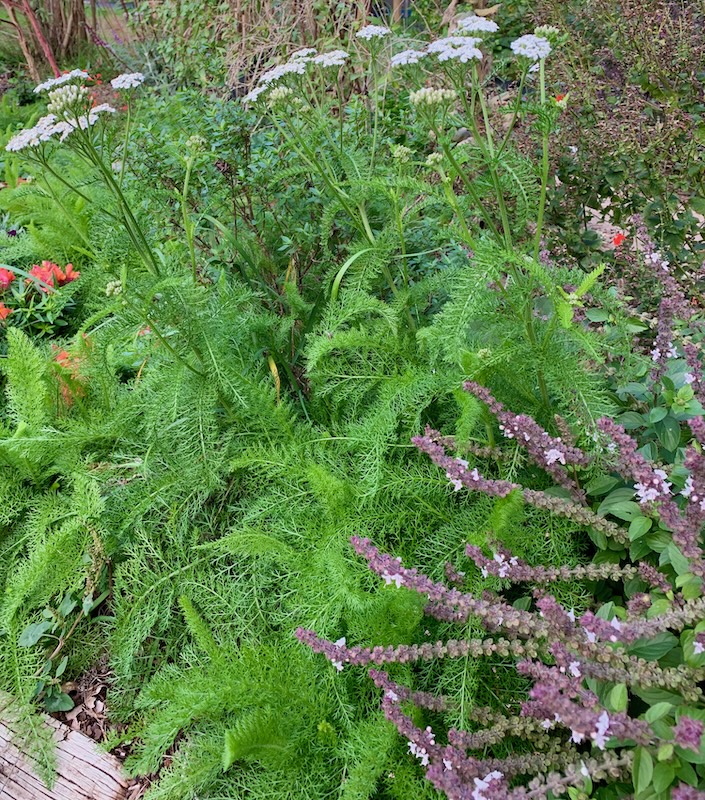
Yarrow growing with Holy Basil at The Herb Cottage
The colorful varieties found in nurseries are developed and grown for their ornamental value and are not suitable for herbal use. The standard white, sometimes with a pinkish hue, variety found in the wild (and in gardens) contains the volatile oils that make up the herbal properties of Yarrow.
Yarrow has been used as a healing herb for at least 50,000 years. There is evidence that people as far back as Neanderthals used Yarrow. Early herbals describe a myriad of uses for this prolific herb. Many herbalists consider it a panacea- an herb that has so many uses it is difficult to categorize.
Yarrow for Wound Healing
A main function of Yarrow can be found in common names for this herb: Staunch Weed, Soldiers Woundwort, Woundwort and Carpenter’s Wort. These common names refer to Yarrow’s ability to stop bleeding. A quick poultice of fresh or dried Yarrow leaves placed upon a wound will help blood clot and, due to its antimicrobial property, it will aid in blocking infection. It has been used by soldiers throughout history, including in the American Civil War, for battlefield wounds. Note: the word ‘wort’ is an old term for the word plant or weed.
Yarrow Aiding in Digestion
Another gift Yarrow gives us is due to its Bitter quality. Bitter is a property of herbs (and food) that help us digest our food better, address bloating and heartburn. A cup of Yarrow tea after a meal will help setting the stomach and support proper digestion. Since Yarrow is a bitter herb, it can easily be combined with other, more flavorful herbs for a more palatable beverage. It mixes well with Peppermint, Lemon Balm and Holy Basil.
Yarrow Herbal Preparations
In emergency situation where other medical care is not available, Herbalists use Yarrow right off the plant. As a fresh poultice, It stops bleeding, including nose-bleeds. It has antimicrobial action and helps ward off infection.
Yarrow Tea, with or without other herbs added, can be considered a daily tonic to support healthy blood flow and to keep internal organs such as the liver and kidneys healthy.
Yarrow Infused Oil or a Salve made from it helps reduce skin inflammation. It supports good wound healing.
In Conclusion
Yarrow is a herb with long lasting flowers in the garden. It deserves a place in flower gardens, pollinator gardens and herb gardens. A medicinal herb garden would not be complete without yarrow growing alongside our other herbal helpers.
Quote for the Month
Amateurs sit and wait for inspiration, the rest of us just get up and go to work. -Stephen King, novelist (b. 21 Sep 1947)
Until next time,
Be well, enjoy your herbs and be kind to yourself.
Cindy

Visit The Herb Cottage Shop for Herb Tea Blends, Aromatic Bitters and Infused Herbal Oils
